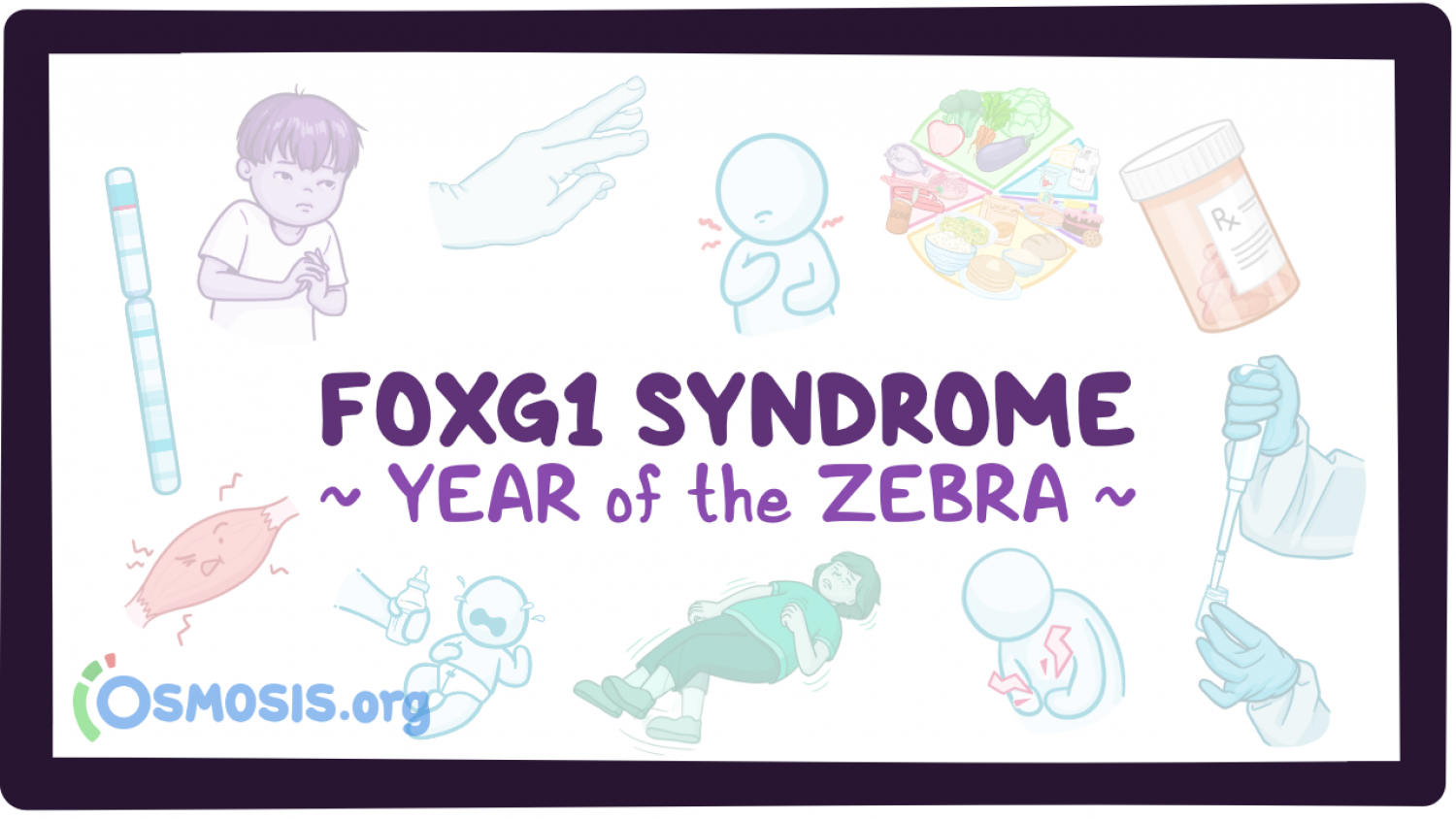
Rare Disease Education: FOXG1 Syndrome
Editor: Kelsey LaFayette, DNP, RN, FNP-C
"When you hear hoofbeats, think of horses, not zebras,” is a common saying in medical education that means you should think of common conditions first, instead of rare ones, in making a diagnosis. “Rare” is a relative term though and about 7,000 rare, or "zebra," conditions affect more than 350 million individuals worldwide. Although these conditions collectively affect an enormous number of people, each of these conditions individually is rare enough that it can be difficult to secure the resources to study them and to develop treatments and cures. Likewise, awareness of rare conditions may be low and health care professionals may not be familiar with their signs and symptoms making it more difficult to reach a correct diagnosis and provide effective treatments.
To increase knowledge about rare conditions, Osmosis and the National Organization for Rare Diseases (NORD) have collaborated on an initiative to bring education and awareness to the public. We are excited to be a part of this initiative because we believe everyone deserves quality health care, no matter how rare their condition.
Zebra of the Week: FOXG1 Syndrome
The human brain may very well be the most complex object in existence. It’s where billions of neurons communicate delicately to orchestrate everything from our simplest movements to our most complex thoughts. Yet, sometimes a problem with a single component in the object is enough to disrupt the whole, such as in this week’s zebra, FOXG1 syndrome.
FOXG1 syndrome is a rare neurologic condition in which alterations in the FOXG1 gene disrupt the production of a protein that is essential for early brain development. Symptoms are typically apparent in early childhood. They may include a small head size, intellectual disability, abnormal movements, seizures, and limited communication and social skills. FOXG1 syndrome is typically not inherited from a parent and does not run in families. It can affect both males or females.
To learn more about the mechanisms and diagnosis of FOXG1 syndrome, watch the dedicated Osmosis video on YouTube and Osmosis.org
Meet Scott Reich
“There's a reservoir of hope, energy and optimism many of us have that we may not know about until we're really tested,” says attorney and author Scott Reich.
The heavy test he and his wife Ilissa have endured for the past three years started when their infant son Eli was diagnosed with a rare brain disorder called FOXG1 syndrome which causes severe seizures and impedes normal movement, speech and sleep, among other problems. Scott vividly recalls the moment when Eli’s doctor explained there was no hope for treatments or a cure. “I just felt an instantaneous gravitational pull that despite the intense emotion that overtook us in the doctor's office, we were going to do something about it.” That “something” includes starting the nonprofit foundation Believe in a Cure which is currently funding over fifty research and development projects worldwide focused on this pernicious disorder.
Join us for this enlightening conversation with host Shiv Gaglani to learn about the multi-pronged strategy scientists are pursuing to overcome the mutation in this so-called master gene; the promising results emerging from preclinical programs; and the supportive global community Believe in a Cure has helped create for the hundreds of other families fighting the same battle.
Organization Taking Strides
The FOXG1 Research Foundation was born from the resolve of parents facing their children's diagnosis with FOXG1 syndrome. In 2017, the parents, connected from across the globe by their shared challenge, convened over Skype and were determined to change the dire predictions for their children.
They are spearheading research into the poorly-understood mechanisms that define FOXG1 syndrome. This research holds promise not just for those with FOXG1 syndrome, but potentially for a range of brain disorders affecting millions.
With the guidance of a scientific advisory board that joins together the various stakeholders in the field, the Foundation has made significant strides in understanding and treating FOXG1 syndrome, including developing gene and antisense therapies. Their initiatives like the FOXG1 Patient Data Center and collaborative Science Symposiums aim to accelerate progress towards clinical trials.
The Foundation’s website provides valuable information to support families from the beginning of their journey with the diagnosis. They even honor the patients that have fought valiantly and serve as inspiration for fundraising efforts and future endeavors. Visit their website to learn more.
